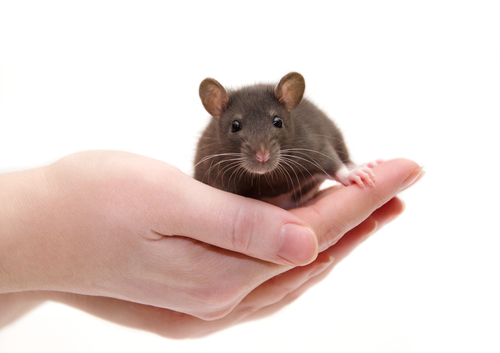Single Dose of AMT-190 Effective in Mice and Primate Studies of Fabry

A single administration of AMT-190, uniQure’s investigational gene therapy for Fabry disease, significantly increases the activity of alpha-galactosidase A — the faulty enzyme in Fabry patients — in mice and primate models of disease.
Preclinical findings were announced in the presentation “Development of an AAV5 gene therapy for Fabry disease” at the American Society of Gene and Cell Therapy (ASGCT) Annual Meeting, which took place virtually May 12–15.
Fabry is a rare genetic disorder caused by mutations in the GLA gene that provides instructions for making an enzyme called alpha-galactosidase A (alpha-GAL A), which is responsible for breaking down a fatty molecule called globotriaosylceramide (Gb3).
Gene mutations typically reduce the activity of alpha-GAL A, resulting in the accumulation of Gb3 in several tissues and organs.
Enzyme replacement therapy (ERT), a form of treatment in which an artificial enzyme is given to patients to compensate for the faulty one, is currently the gold standard treatment for Fabry.
Nevertheless, in many patients ERTs are still ineffective at eliminating Gb3 from target organs, particularly the kidneys and heart, due to their inability to reach them. Many patients also start producing anti-GLA neutralizing antibodies, rendering ERTs less effective.
AMT-190, uniQure’s experimental gene therapy to treat Fabry, uses a harmless adeno-associated viral vector (AAV), called AAV5, to deliver a modified version of alpha-N-acetylgalactosaminidase (NAGA) to patient cells.
NAGA is an enzyme similar to alpha GAL A that also is able to break down Gb3 and mimic its activity. But, at the same time, it is different enough to avoid being targeted by harmful anti-GLA antibodies.
In addition to circumventing the issues posed by GLA inhibitors, the modified NAGA also is more stable and easily incorporated into target organs compared to conventional ERTs.
Earlier preclinical studies have shown that a single intravenous infusion of AMT-190 increased the activity of alpha-GAL A by 10-fold in the plasma and by 20-fold in the liver of healthy mice.
Additionally, when given to a mouse model of Fabry, the therapy successfully lowered the levels of Gb3 and globotriaosylsphingosine (lyso-Gb3) in both plasma and target organs, within two weeks after dosing.
New preclinical data now announced by uniQure shows that a single administration of AMT-190 in primates was sufficient to trigger the activation of the modified NAGA enzyme in the animals’ livers and to increase the activity of alpha GAL A in the plasma.
Additionally, a single dose of the therapy in a mouse model of Fabry continued to increase the activity of alpha-GAL A in the animals’ livers and plasma, and to reduce the levels of lyso-Gb3 in plasma and target organs (kidneys, heart, and brain) for up to 30 weeks (approximately seven months) after dosing.
UniQure also presented new findings from preclinical studies of other potential gene therapies — AMT-150 for spinocerebellar ataxia type 3 and AMT-180 for hemophilia A.
“Our collective presence at ASGCT showcases the breadth of uniQure’s gene therapy expertise and leadership, including our research capabilities and excellence in developing and manufacturing novel gene therapies,” Matt Kapusta, CEO of uniQure, said in a press release.
“We are happy to share new preclinical data on our gene therapy candidates, as well as our innovations in technology and manufacturing,” Kapusta said.






